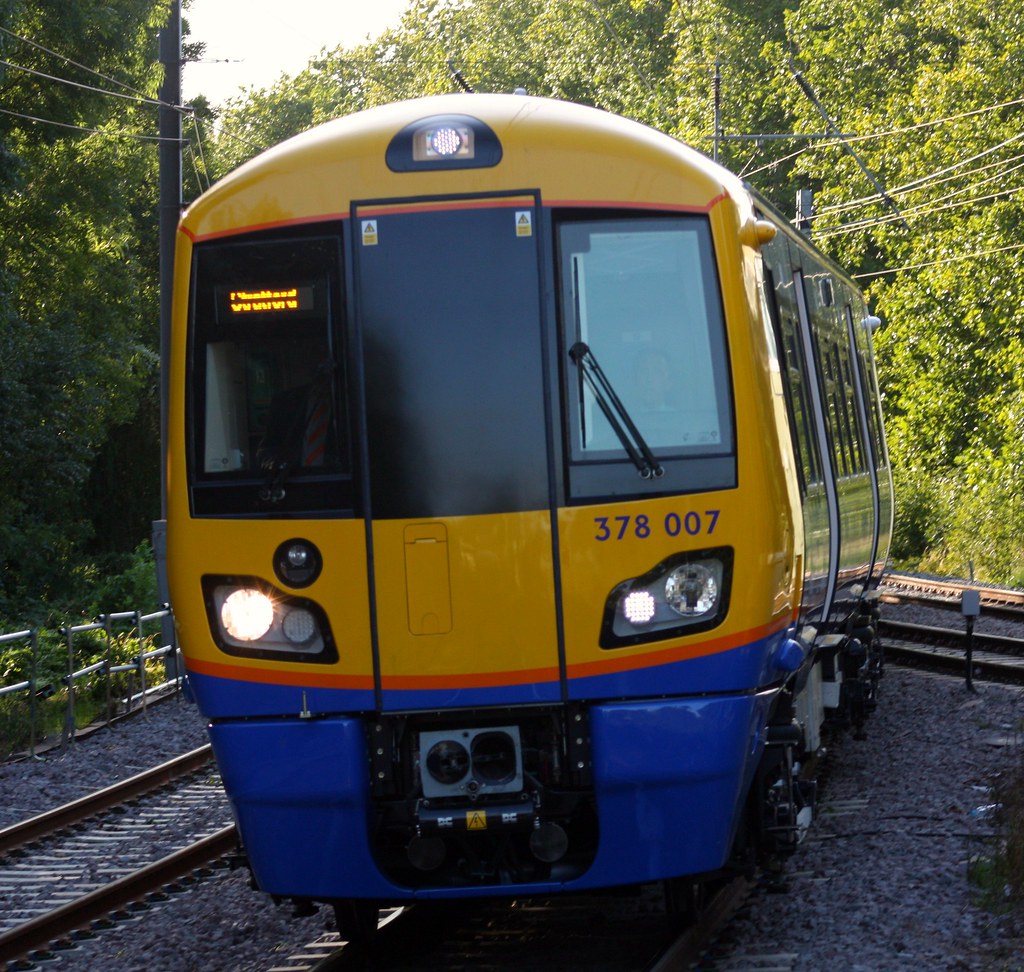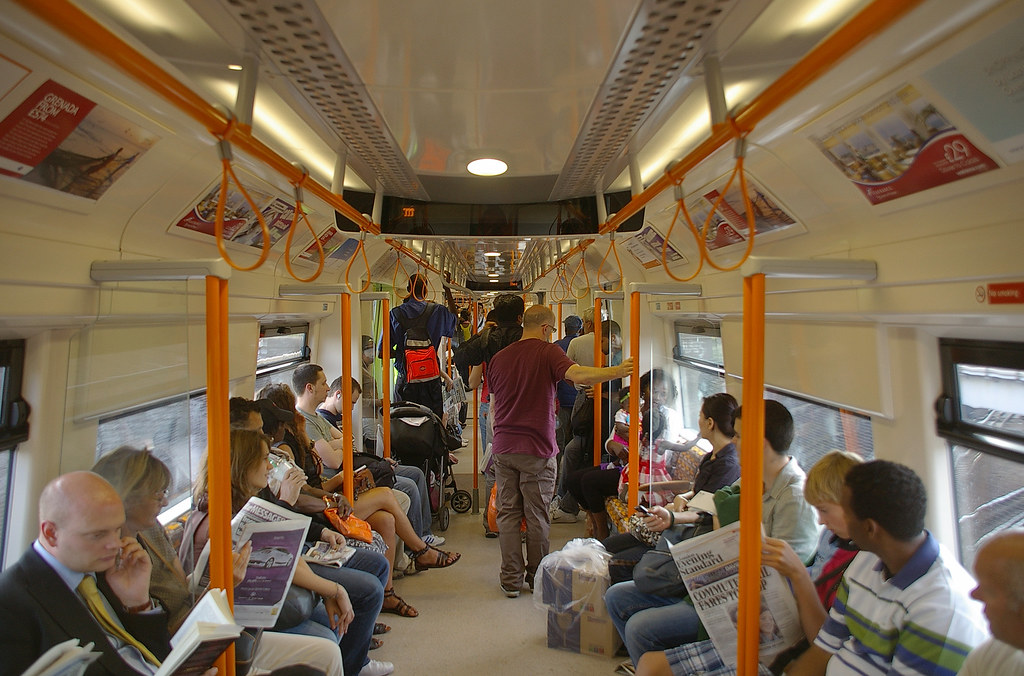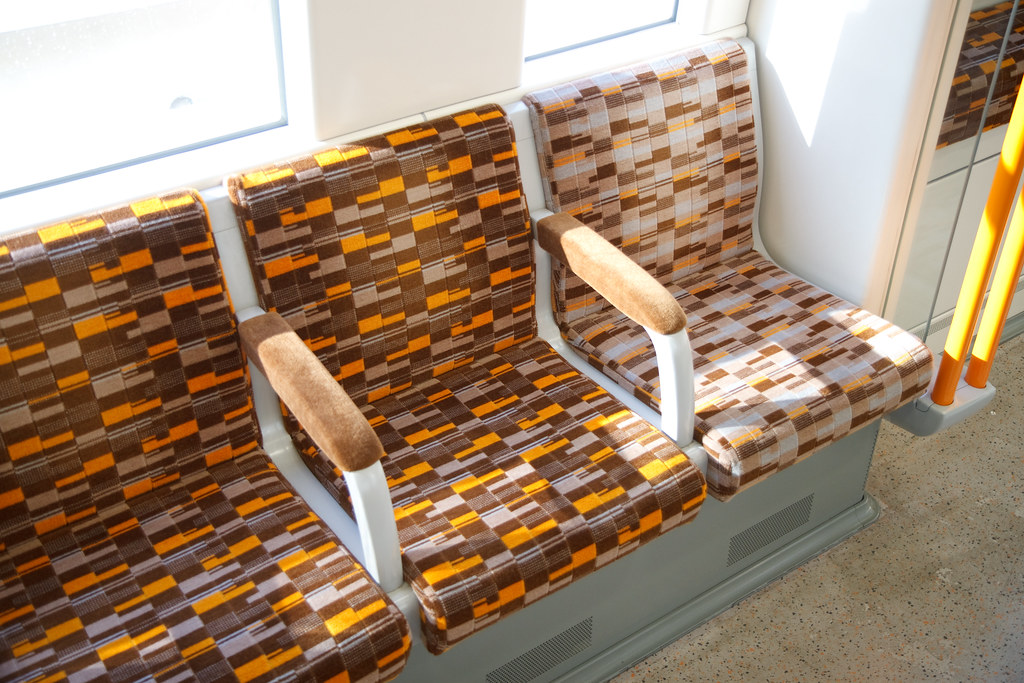Crossrail
Work continues on clearing the sites that the future Crossrail stations will use. Due to the lengths of the trains, there will be at least two exits at either end to allow for both a greater catchment and dispersal of passengers.
Paddington
 Bond Street
Bond Street
 Tottenam Court Road
Tottenam Court Road
 Farringdon
Farringdon
 Liverpool Street
Liverpool Street
 Whitechapel
Whitechapel
 Canary Wharf
Canary Wharf

Pictures taken by
i like concrete of the sites that are now cleared at Tottenham Court Road
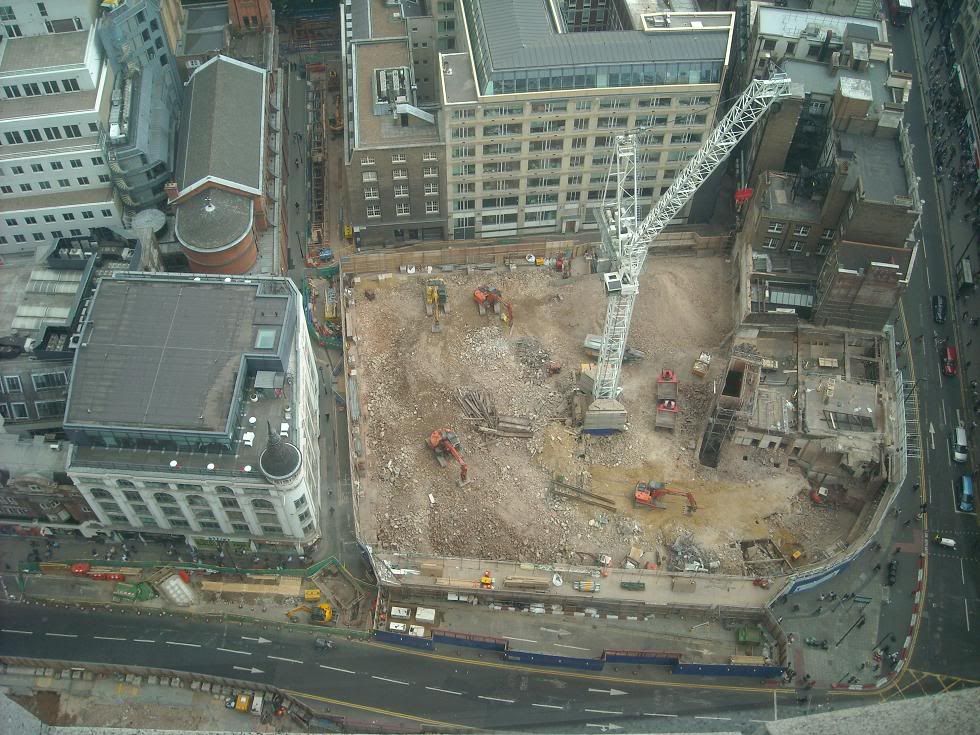

In addition, because the Crossrail station at Canary Wharf is being constructed in the North Dock, 310 18.5m long, 1.2m diameter steel Giken piles are being placed into the dock. To allow for the piles to be placed in the dock, one of the bridges to the Wharf had to be raised.
On a side note, the site the piles and crane are located on is the site of the future North Quay towers. Once work on Crossrail is finished, work on North Quay an begin. Pics by
fitz44
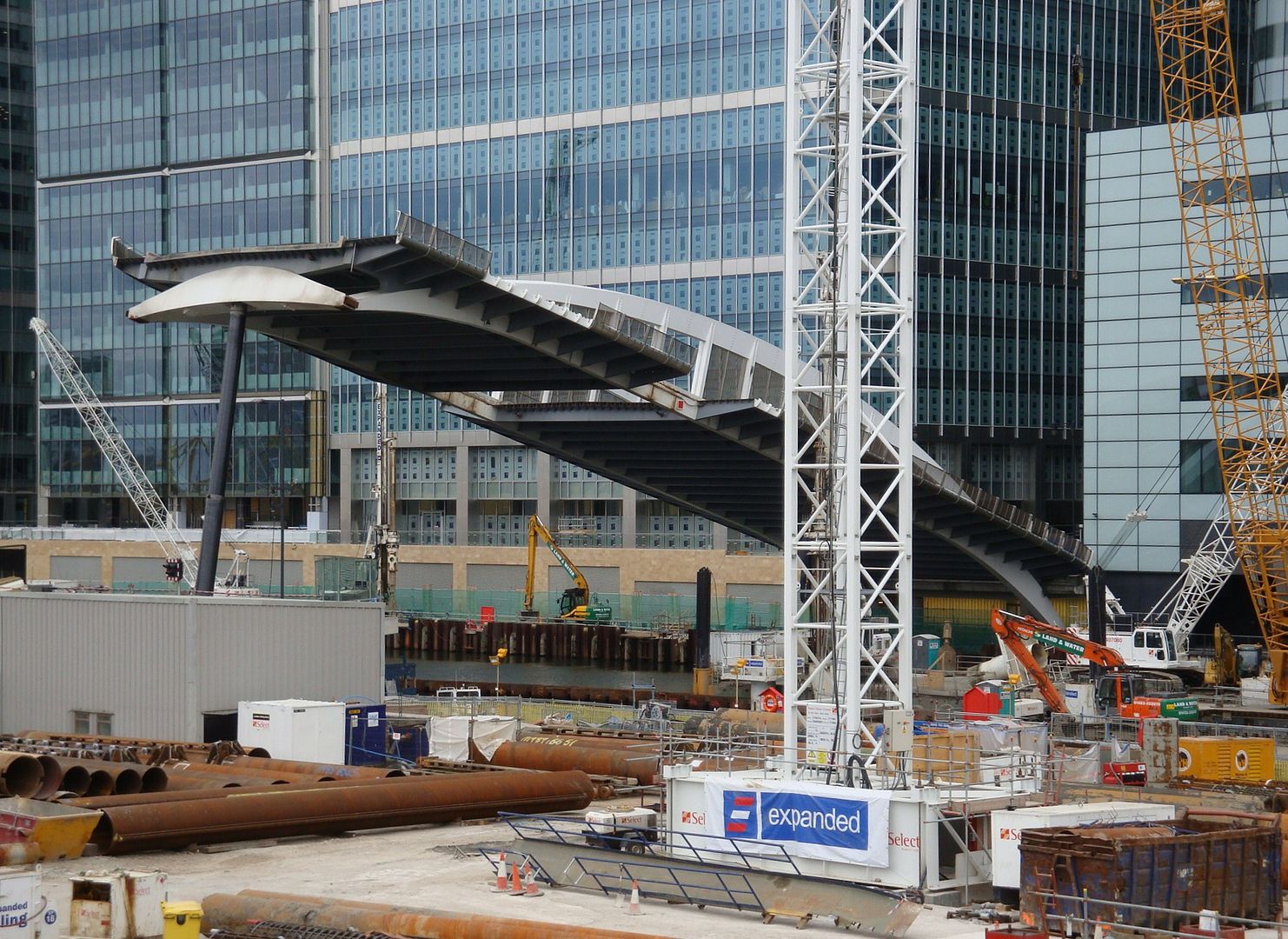
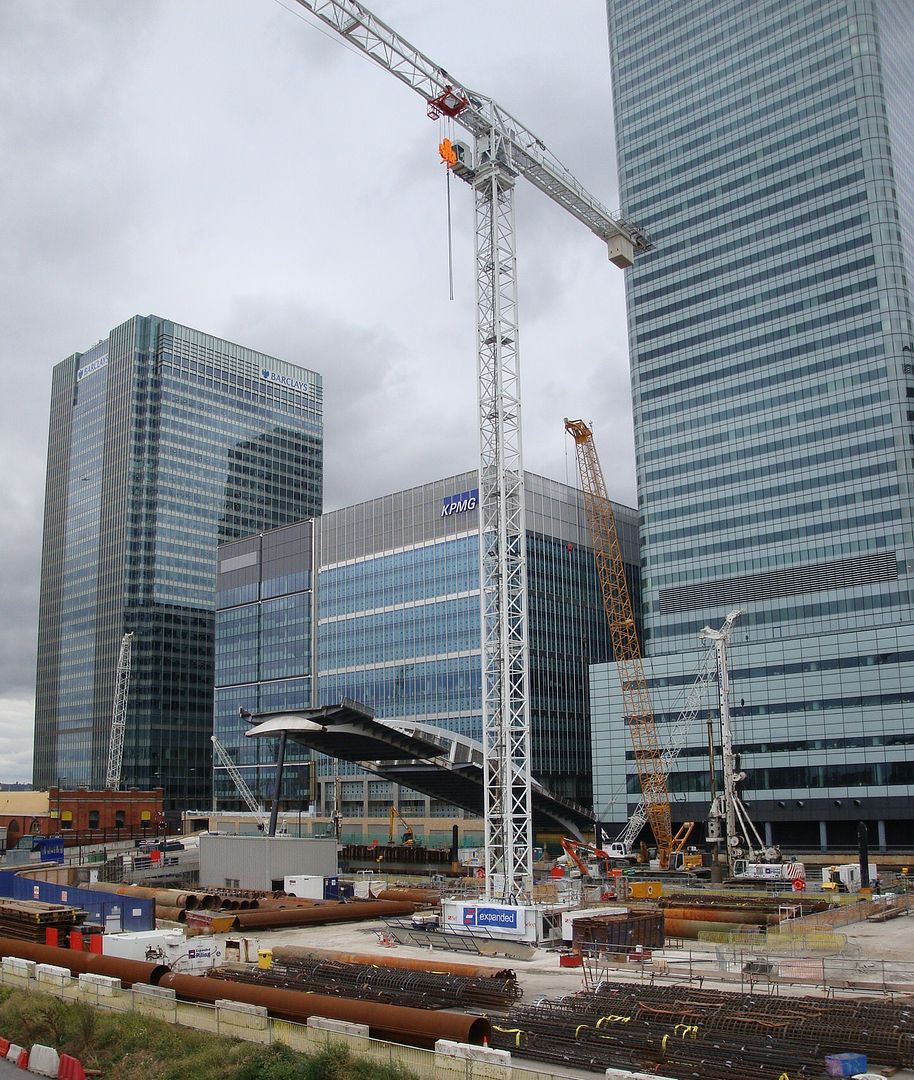
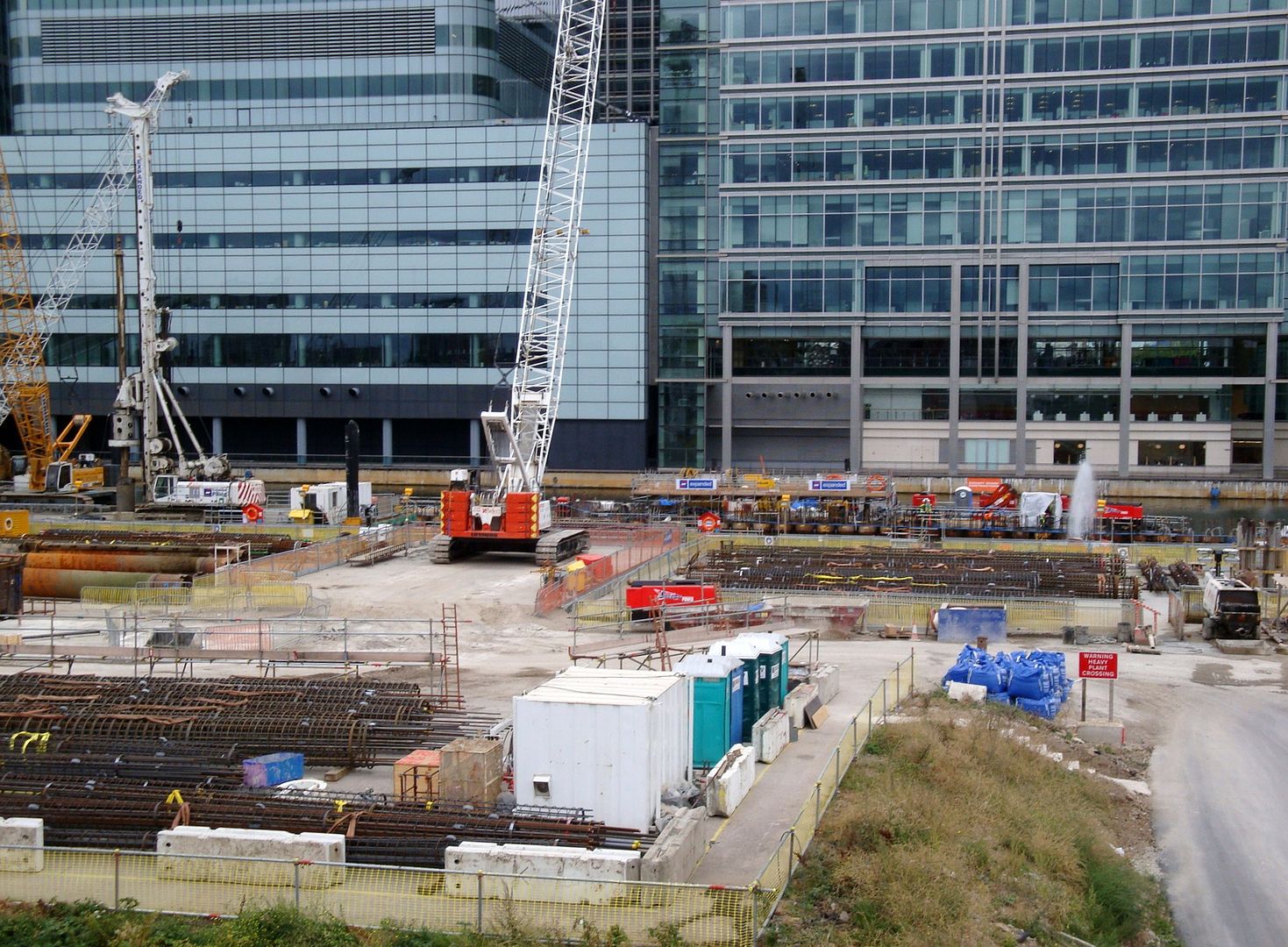 mtj73
mtj73 at SSC took this picture of the rig that it putting the piles in
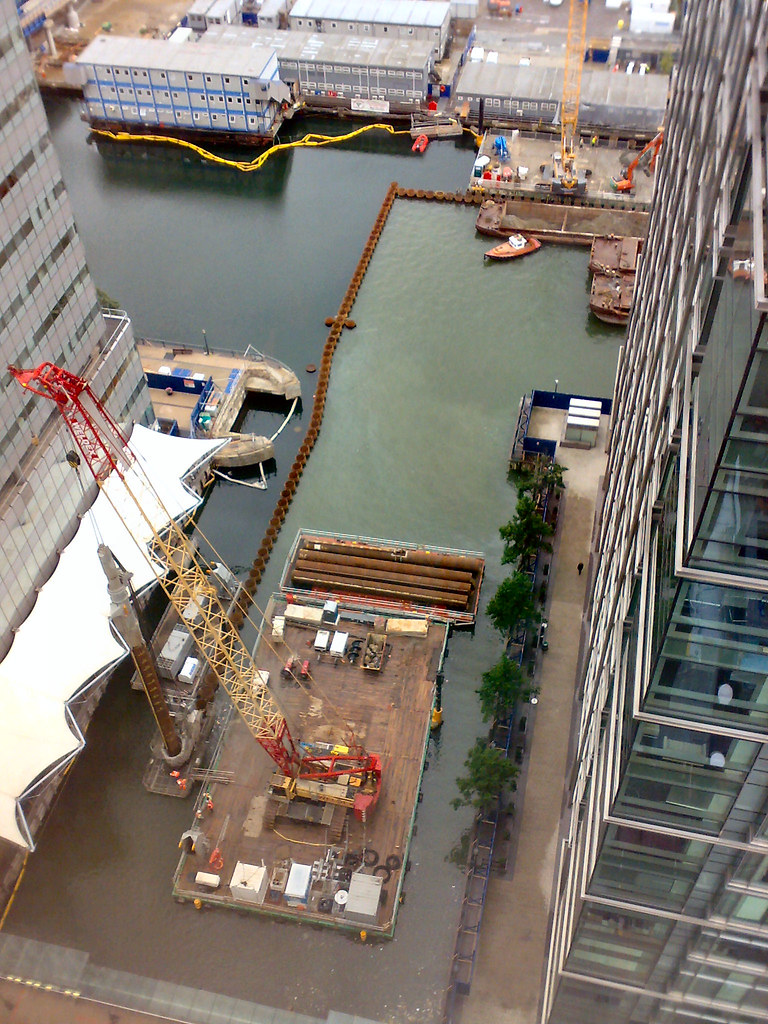 King's Cross St Pancras Northern Ticket Hall
King's Cross St Pancras Northern Ticket Hall
The King's Cross St Pancras tube station is the biggest transport interchange in London, combining 6 tube lines, 2 inter-city (domestic and international) & commuter rail termini, and the Thameslink line. It will also be the terminus for the Olympic Javelin services come 2012, and a stop on the future Crossrail 2 line.
Once all the work is complete, there will be four ticket halls (with dozens of entrances).
- The main ticket hall located at the front of King's Cross station was re-built prior to the arrival of Eurostar
- The Pentonville Road ticket hall is located east of the main warren of entrances and tunnels and used to serve the old Thameslink station (this was moved under St Pancras to provide greater interchange capabilites) and a tunnel connecting to the other lines
- The Western Ticket Hall was opened prior to the arrival of Eurostar and is located under St Pancras station
The final ticket hall to be constructed, is the presently u/c Northern Ticket Hall. This will be located immediately below the new King's Cross Western Concourse which is being built to cope with the increase in train ridership. The completion date is 1st December.
The following pictures are an illustrative update of what is happening. All have been sourced by
tompagenet at flickr.
The new massive northern ticket hall (one of four)

Train information board for the deep level lines


The entrance to St Pancras from the ticket hall
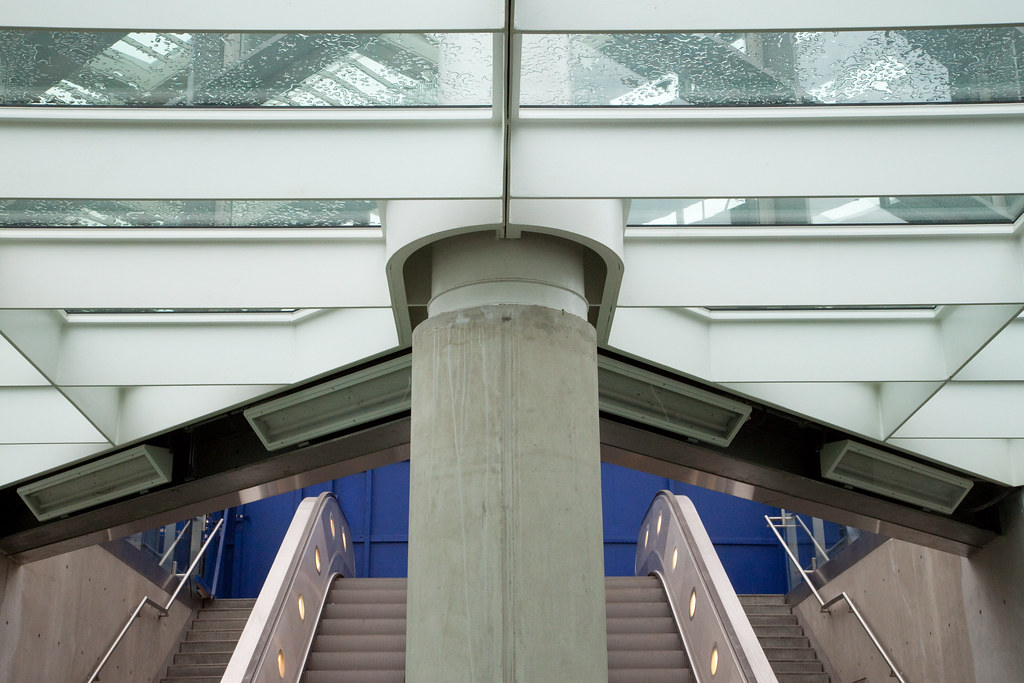
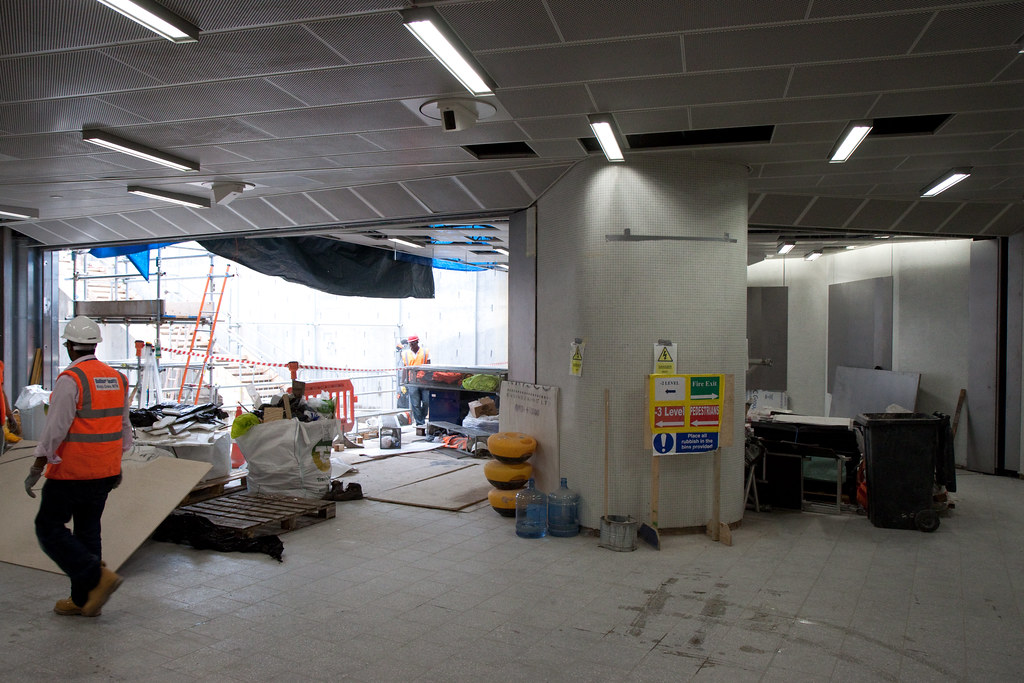
One of several connection tunnels to ease step-free access across the entire station

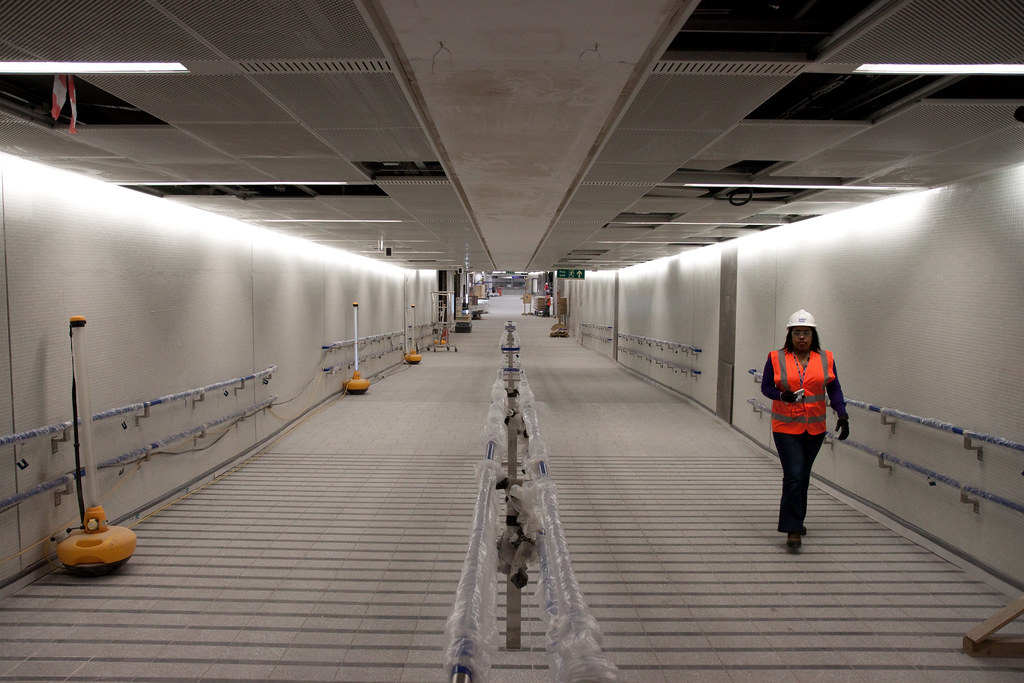
Escalators up to the northern ticket hall
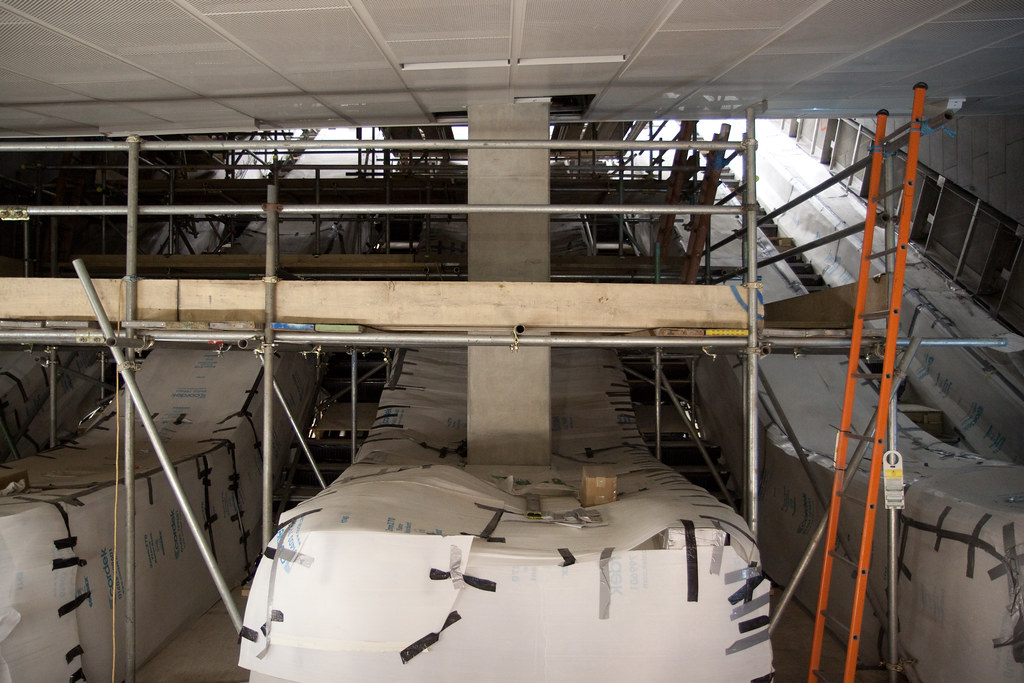
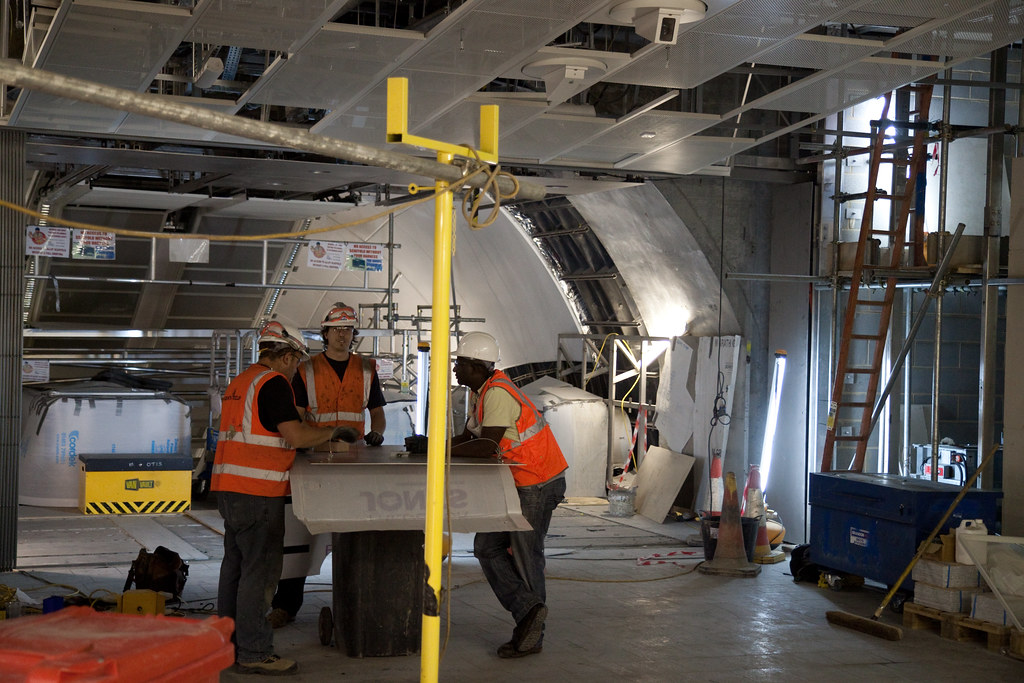

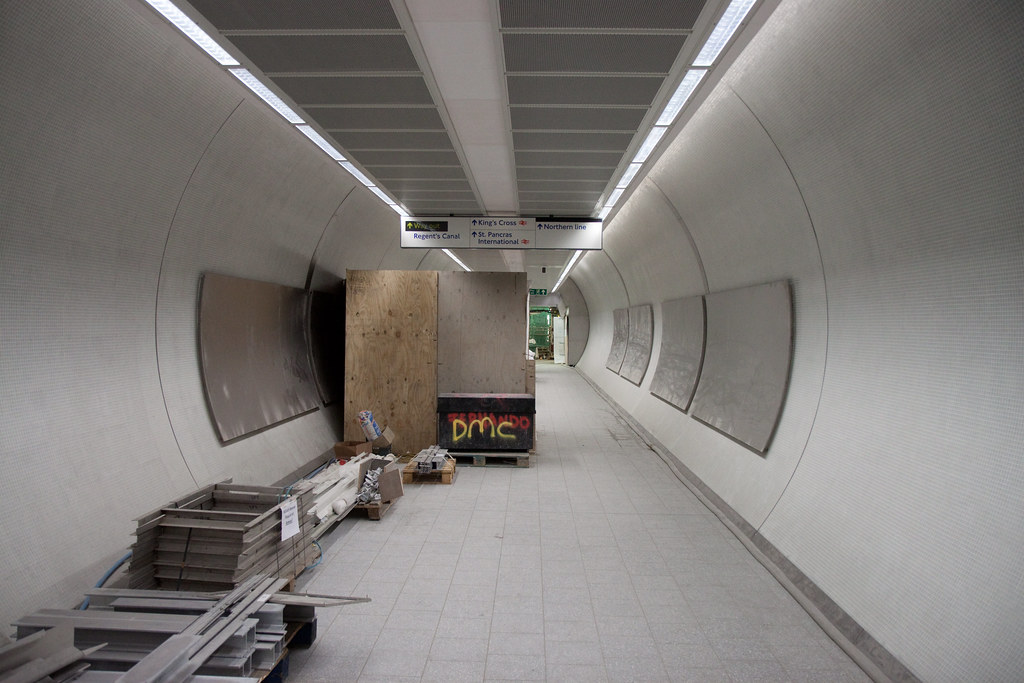
Towards the Pentonville Road ticket hall

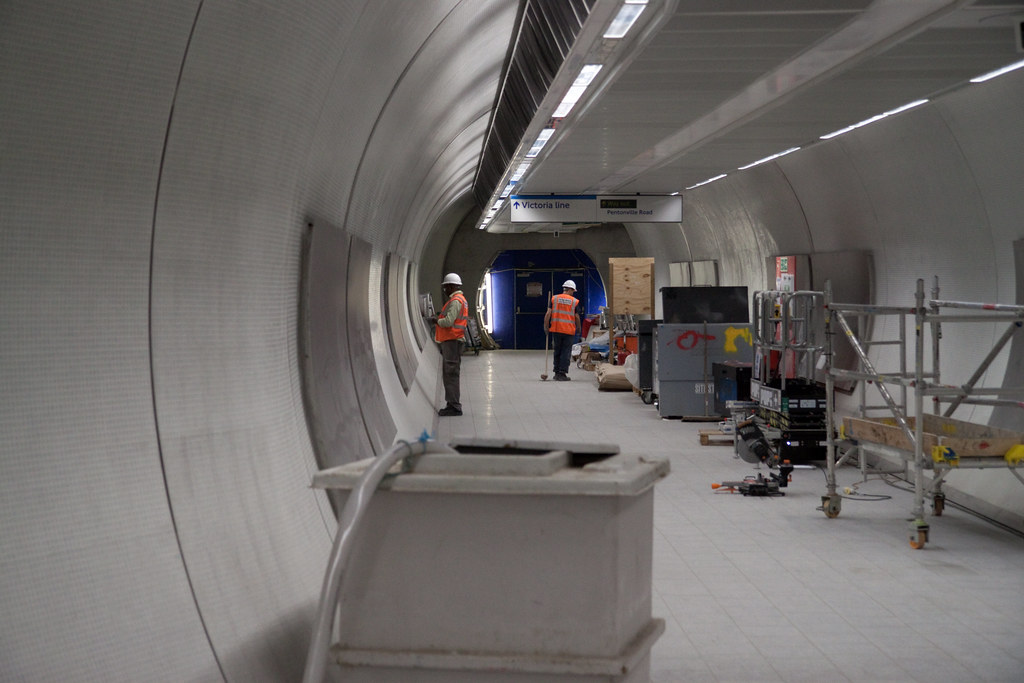

Images of the Western Concourse with the new northern ticket hall underneath. Image sourced by
hoodedvillain at SSC.


The finished article
 Future Hammersmith Bus Station
Future Hammersmith Bus Station
Images and text sourced by
fitz44 at SSC.

London Buses are improving their existing bus station facilities at Hammersmith which is at the hub of many routes. The project retains the bus station at first floor level, and increases physical area by installing a deck over the underground railway and over the vacant site on the North East corner of the Hammersmith Gyratory. The complex engineering required to expand the bus station, particularly over the railway, requires careful planning and extensive consultation with third parties.
The scheme looks to integrate a brand new 21st Century bus station facility connecting to the underground station, with a landmark quality office building above ground. The design has been driven in the first instance by achieving the best possible bus station layout, and many options have been explored and examined during this process.

The movement of buses and people is at the very heart of the concept. As a major new interchange station linking all modes of public transport, the architects aim to capture the spirit of movement within the architectural solution. As buses circulate on the first floor they weave their way around the central passenger waiting spaces and the entire floor area is utilised for bus standing facilities and bus stops. This sweeping path translates to a plan footprint which uses the full extent of the site, manifesting on the facade as a series of upper floor projections.
The projections mark the entrance to the bus station from ground level, whilst also becoming a visual and tactile surface that the passenger moves through (escalators), walks upon (floor surface), is covered by (roof plane) and experiences when on the bus (ribbon).
The ribbon is a striking feature of the design which is an expression of the dynamic function of the bus station. The ribbon forms the street facade of the bus station, and is re-introduced to the upper parts of the office building in an holistic approach. The spaces behind the projecting upper floors become conference rooms or amenity spaces, these also present themselves to the inner elevations facing the bus station, so that the building can be seen as an object with all facades having a public presence.
 East London Line Extension
East London Line Extension
Progress continues apace on London's new orbital rail line.
EZTD (@ flickr) took these pictures from the Broadgate Tower during Open House weekend.
The first picture shows the line heading northwards towards Dalston Junction, with the curve to the right linking the Shoreditch High Street station (see second picture) and southern section to the former Broad Street viaduct that trains last used in the 80's.
The 144 year old brick viaduct is thus be recycled for a modern train service. An un-used overgrown stretch is visible to the south and is now overgrown, however can you spot the other viaduct stretch which is now home to with former tube trains being used creatively as modern offices.
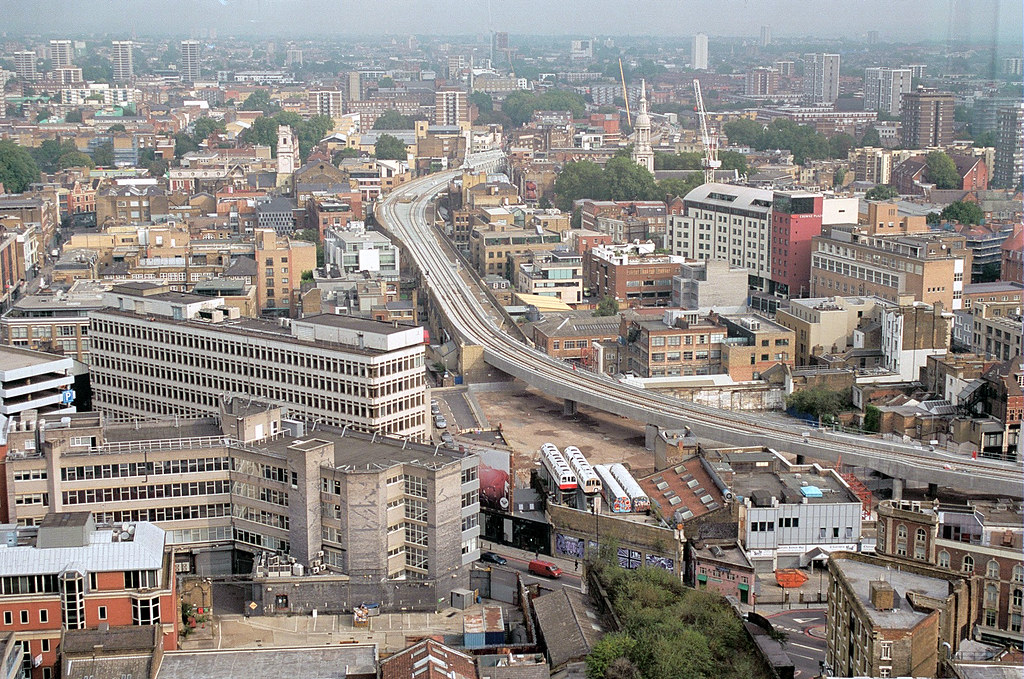
 individual image credit: jeremai dotcom @ flickr
individual image credit: jeremai dotcom @ flickr
The third picture is of the former Bishopsgate terminus (the station opened in 1840 and closed to passengers in 1874), which became redundant when Liverpool Street opened (four of the approach tracks into Liverpool Street are visible - there are others under the viaducts to the left) which is located behind the Broadgate Tower. Similar to Grand Central it was built on two levels and had a vast roof that burnt down in the '60's. For more info on the former Bishopsgate station visit the multi-page spread here:
http://www.subbrit.org.uk/sb-sites/s...on/index.shtml (some excellent pics of the underground brick vaults).
Quite a bit of the structure is grade listed (ie protected against any ammendments, let alone demolition), but there are plans to turn the entire site into a new skyscraper district (see fourth picture). The historic viaducts would be retained and used for various modern amenities - something most modern skyscraper developments couldn't dream of.
Just visible to the top left is the u/c Shoreditch High Street station (the viaduct in the 1st picture would be to the right), while off to the top left (off-picture) the ELL crosses the Great Eastern Main Line before diving underground towards Whitechapel and under the Thames in the world's oldest underwater tunnel.
You may question why the station is in a box despite being built on a viaduct. The solution is simple: the future skyscrapers will be built to
wrap around and above the station, so to ensure that the line can stay open the station is being built with sufficient cover, while there is little point in having an open-air station when it won't be so for much longer.
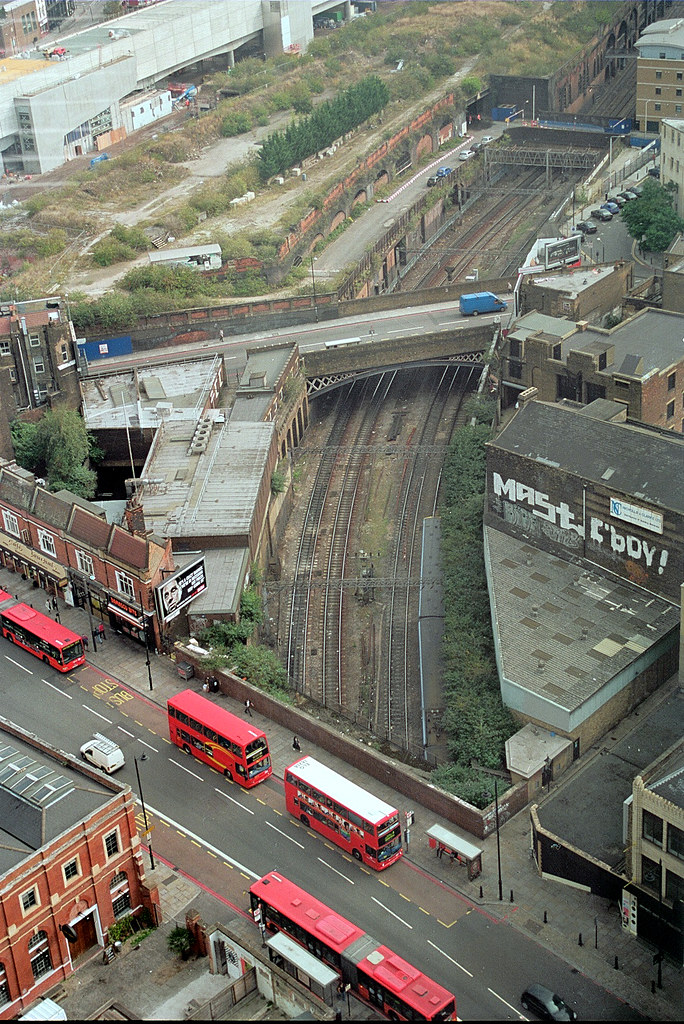
The future Bishopsgate Goods Yard development

On a side note, one of London's best night clubs is located under the brick vaults of the future East London Line.
Infact this is a bit of a tangent - but one of the best things about London's railways is that when viaducts were built, we did so with lots of bricks and didn't really use iron or steel. The result is that quite a few arches are now used for various uses (retail units, offices, storage spaces, garages).
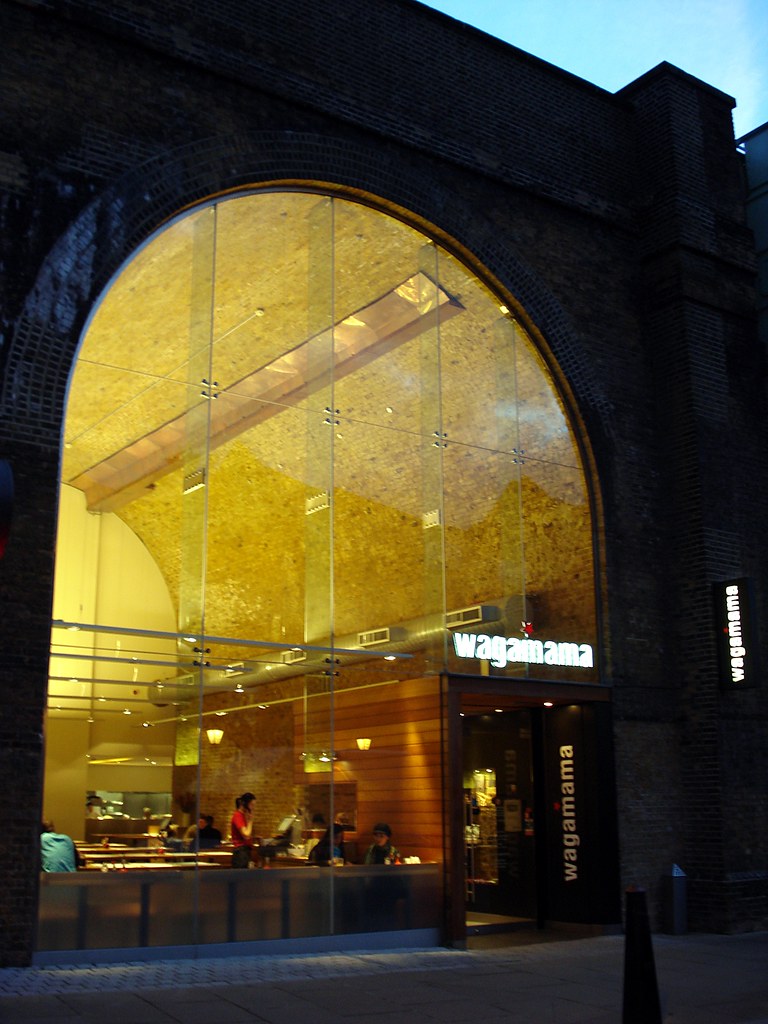 Source: Kake Pugh at Flickr
Source: Kake Pugh at Flickr
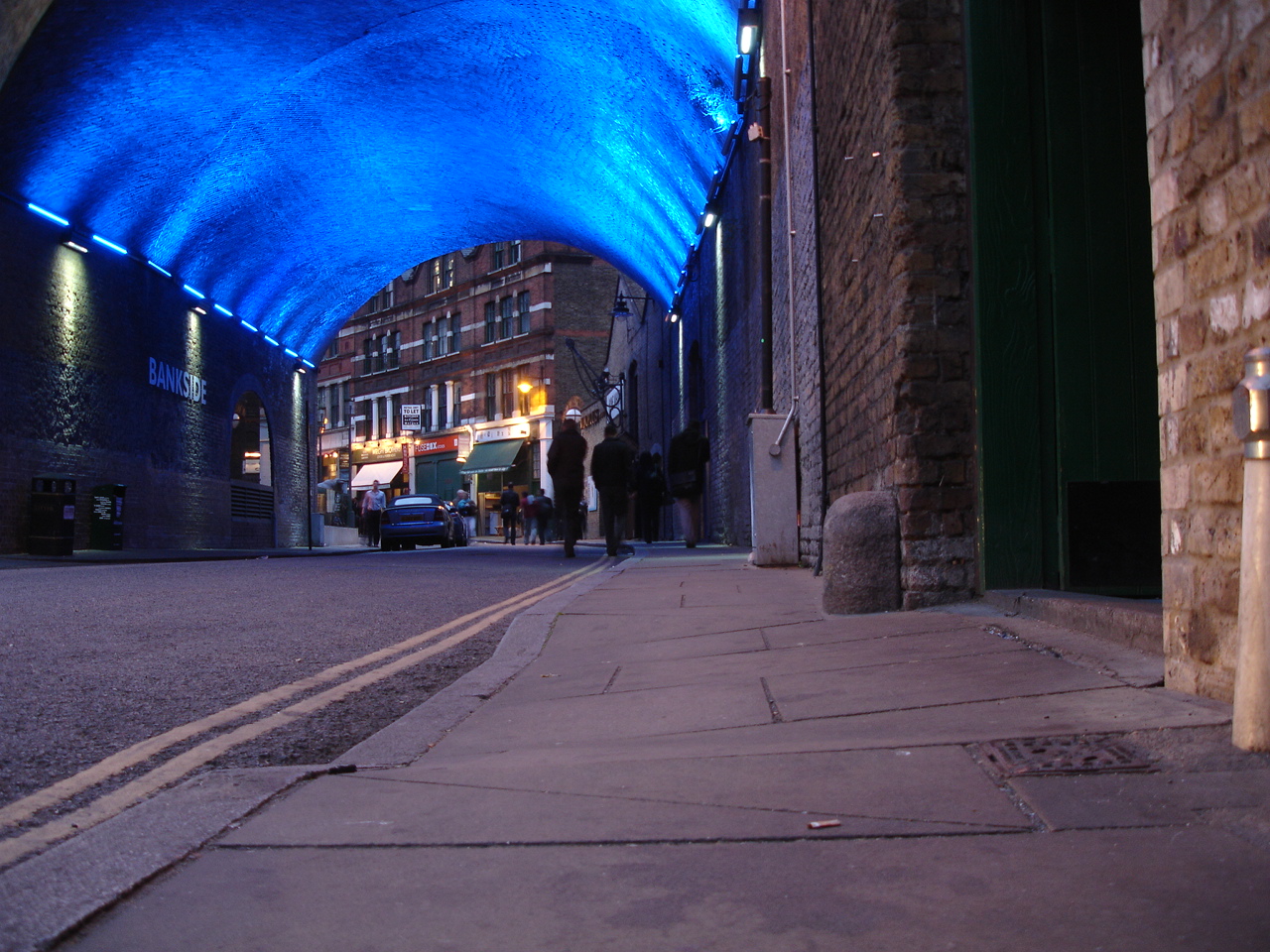
Source: Temple Works at Flickr
London Overground
Work continues to upgrade the London Overground network which will create a new orbital line around London allowing passengers to avoid the hassle of travelling into Central London.
The East London Line Extension will plug the hole in the east to create a full circuit, but all stations are being renovated and new trains have begun to roll out. These are the first walkthrough-trains in the London and the UK similar to those found in Hong Kong. The new London Underground rolling stock will be share this development when it begins operation later this year.
Pics sourced from Flickr, taken by
darkprince66,
mattmuck4950, and [/b]tompagenet[/b]
